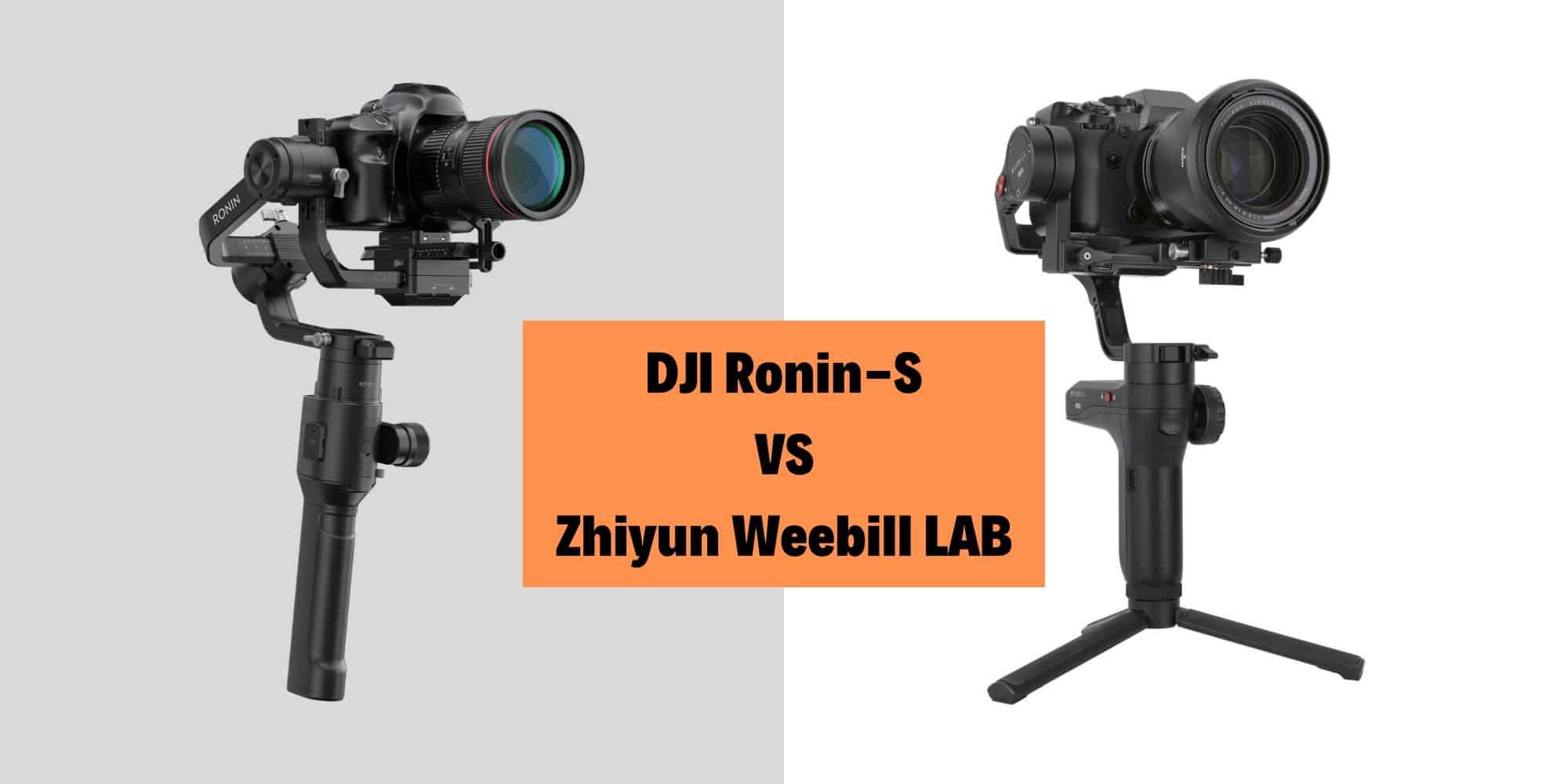Zhiyun used to dominate the under $1000 singled-handed gimbal market. That was until DJI answered with the Ronin-S which I found to be overall a better gimbal than the hugely successful Zhiyun Crane 2. This year, Zhiyun released the Crane 3 LAB and Weebill LAB in an attempt to regain the single-handed DSLR/Mirrorless camera gimbal crown.
In this article we’re going to compare the Zhiyun Weebill LAB with the DJI Ronin-S which I ranked as the best gimbal for DSLR. While the Crane 3 LAB is definitely worth considering, there is no doubt the Weebill LAB has made bigger shockwaves thanks to its lower price point and compact, travel-friendly size.
No products found.
- 【Upright & Underslung Modes】Zhiyun WEEBILL LAB boasts a versatile...
- 【Max Payload of 6.6 lb】Zhiyun Weebill is the most portable gimbal EVER...
- 【Wireless Image Transmission】The camera gimbal supports 720p real-time...
- 【Always in Control】The 2018 latest stabilizer features wheels for...
Stabilization Performance
Most DSLR and mirrorless camera gimbals coming from Zhiyun and DJI have offered top-notch stabilization for a while now and the Ronin-S and Weebill LAB are no different. Although the general consensus is that the Ronin-S has slightly superior stabilization, the difference is hardly big enough to make this the ultimate deciding factor.
Winner: DJI Ronin-S
Build Quality
The Ronin-S is the clear winner here. It’s a heavy piece of equipment that feels incredibly robust next to the Weebill LAB. The Zhiyun Weebill LAB has more plastic than the older Crane 2, which already felt less hard-wearing than the Ronin-S.
Winner: DJI Ronin-S
Weight and Portability
The trade off of robustness is of course weight, and the Weebill LAB weighs 2.5lbs (1.12 kg) whereas the Ronin-S weights 4.1 lbs (1.86 kg). Not only is the Weebill LAB much lighter, its form factor is also much more portable. Running around filming with a Ronin-S will feel a lot more cumbersome than the Weebill LAB.
In defence of the Ronin-S, it does pack down quite nicely thanks to the ability to unscrew the handgrip from the gimbal head. However, there is no questioning that for travelling, the Weebill LAB is superior.
Winner: Zhiyun Weebill LAB
Ergonomics
The ergonomics of the Weebill LAB aren’t great. Its compact design is a blessing and a curse. The handle is short and the buttons and dials are packed closely together. However, one of the unique features of the Weebill LAB is the ability to attach a mini tripod to two different parts of the gimbal. This actually makes it possible to hold the gimbal in a variety of ways using two hands, and actually makes for a rather pleasant filming experience.
The Ronin-S features great ergonomics, with a longer, comfier grip and superior button placement. However, the focus wheel is rather awkwardly placed.
Winner: DJI Ronin-S
Payload
The Zhiyun Weebill LAB can support a maximum payload of 6.6 lbs (3 kg) vs the Ronin-S’s 8 lbs (3.6 kg). The difference is quite significant, especially if you’re intending to use heavier cine lenses.
For DSLRs, the Ronin-S is definitely recommended over the Weebill LAB, which is fundamentally designed with mirrorless setups in mind. Although Zhiyun does list compatibility with DSLRs, the smaller motors and small form factor of the Weebill LAB just aren’t cut out for the size and weight of DSLRs. Even a mirrorless Sony A7III paired with a Sony 16-35mm f4 lens is pushing it, so you can begin to imagine how it would fair with heavier cameras.
Even if your payload doesn’t exceed 6.6 lbs (3 kg), the Weebill LAB can also potentially run into problems if you try and use longer lenses. This isn’t an issue to do with the camera and lens being too heavy. Rather, the weight distribution is ‘front-heavy’. This requires the camera to be placed all the way back on the mounting plate to be balanced, causing it to hit the back motor when putting it into underslung mode.
Winner: DJI Ronin-S
Compatibility
Both the Ronin-S and Weebill LAB have full interfacing with Panasonic and Sony mirrorless cameras. The Ronin-S has superior compatibility with a number of Canon and Nikon DSLR cameras. Meanwhile, the Weebill LAB features compatibility with a broader range of mirrorless cameras like the Fujifilm X-series. There is always the chance that further compatibility gets added in subsequent firmware updates.
Winner: TIE
Battery Life
The DJI Ronin-S makes use of an in-built battery that can last up to 12 hours. One of the nice things about the in-built battery is that it can be charged while the gimbal is in operation.
Zhiyun state the Weebill LAB’s two removable batteries can provide a battery life of 10 hours. However, most users have found this to be quite an exaggeration, and you can realistically expect something between 4-7 hours depending on things like the weight of your setup and intensity of operation.
The batteries are removable, which means you have the option to carry around spares. However, unlike the Ronin-S, the Zhiyun Weebill Lab does not support direct charging.
Winner: DJI Ronin-S
Verdict: DRAW
On paper, the Ronin-S is the clear winner. It beats the Weebill LAB in most areas and that is perhaps what you’d expect from a more expensive gimbal.
However, drawing a direct comparison to the two gimbals is unfair to the Weebill LAB, which is not only cheaper, but was intended for a different purpose. The gimbal is a lot smaller than the Ronin-S, and if you own a mirrorless camera with a prime lens it’s just a much nicer gimbal to take out and start filming.
Being used to the feel of my Nikon D850 DSLR, I personally rarely use my mirrorless cameras, so the Weebill LAB isn’t really for me. But I know for sure that if I used a mirrorless camera, the Weebill LAB would be the gimbal I’d actually chuck in the bag and find myself using most of the time.

